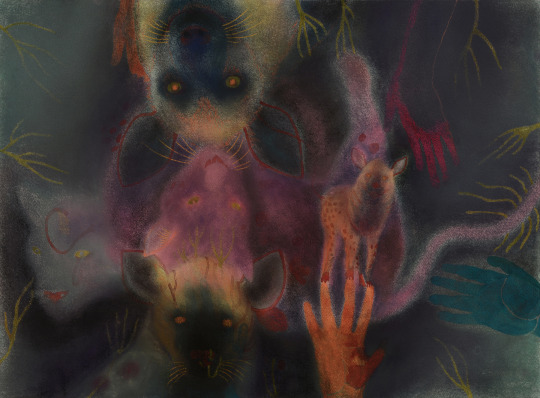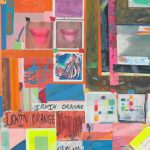Business of Art | Making it Work Outside of New York City
How to cultivate your creative practice and career where you live and beyond.
New York City has a wealth of resources for artists and creative consumers alike, yet there are also challenges associated with being a working artist here, including a high cost of living and limited opportunities for affordable workspace. As much as we love our city (New York Foundation for the Arts’ office is in Brooklyn, after all), for the purposes of this post, we’re focusing our lens outside of city limits to examine how you can best cultivate your creative practice and career.
Develop your goals as an artist.
We talked to three artists who have exhibited widely both within their local communities as well as internationally: Jan Harrison (Recharge Foundation Fellow ’19), who after living in Cincinnati for many years settled in Kingston, NY, two and a half hours away from Manhattan, and Kim Bishop (IAP Mentor ’19) and Luis Valderas (IAP Mentor ’19), who in addition to being artists, co-founded the 3rd Space Art Gallery in San Antonio, TX.
Bishop and Valderas emphasized that it is important for working artists to “have a clear vision of your goal as an artist, then be ready, and be professional.” Artist-centered professional development and entrepreneurial training programs can help you define your artistic vision as well as short and long term goals. In addition to reaching out to your regional or state arts councils for opportunities, several national organizations offer both in-person or remote learning options, including NYFA Learning and the nonprofit organization Creative Capital. Harrison also echoed the need for artists to be proactive about finding opportunities and cultivating their careers, “Find your own way; don’t just try and fit within an established art world. Be creative about how you are going to exhibit your work.”
Be involved in your local arts community.
As a working artist, be involved in your local arts community where you can find like-minded artists and creative professionals to share resources, exhibit work, and learn about new opportunities. Outside of New York City, arts communities tend to be smaller and tight-knit, yet they are often more accessible to new artists. Harrison suggested that artists “go to local openings and studio visits as much as possible, and find connections that aren’t necessarily in the arts, but that have shared passions.” As you discover artists and organizations nearby that you respect, sign up for their mailing lists, follow them on social media, and participate in their programming as much as possible.
“Be prepared to share your knowledge through mentorship or teaching because you have to show how art is valuable to your community,” emphasized Bishop and Valderas, “Be active in the development of art policy in your city.” Search Americans for the Arts’ Arts Service Directory to find your local arts agencies; Americans for the Arts also lists an advocacy toolkit for individuals and information about current legislation affecting the arts on their website.
Be part of the broader arts community, too.
Arts writers and collectors tend to be clustered around international arts centers, such as New York City and Los Angeles, so seek out opportunities to develop connections in those places while still living and being active in your local arts community. Stay up-to-date with industry-related news in your discipline, including reading local and international arts and culture publications and following artists you admire on social media. Develop a strong digital presence, including a website with professional-quality images of current work and previous projects, and maintain active social media accounts. Harrison explained that some of her exhibition opportunities in the United States and in Europe came from relationships that started through various forms of communication, including global environmental and animal activism, as well as social media. She also maintains many personal and professional relationships in New York City and beyond.
In addition to a strong digital presence, Bishop and Valderas recommended that artists develop relationships with academic institutions, join professional associations and participate in their conferences, and apply for residencies to make connections outside of their geographic region. They also advised that artists can “develop your network outside of the community by traveling as well as hosting.”
Find open calls online on NYFA’s Opportunities & Services page, NYFA Source, the Alliance for Artist Communities Residency Directory, and discipline-specific resources such as Common Field, Poets & Writers, and Theatre Communications Group. National visual, performing, and literary conferences that artists and industry professionals both attend include convenings by the Association of Performing Arts Professionals (APAP), Association of Writers and Writing Programs (AWP), and the College Art Association (CAA).
As an artist, find opportunities to channel your creative energy both within and outside your local arts community to raise your visibility, learn from peers and mentors, and build lasting relationships across the diverse populations of arts enthusiasts in this country and abroad. “Think locally, regionally, and globally,” said Harrison, “You can do all three.”
– Maria Villafranca, NYFA Coach
You can find more articles on arts career topics by visiting the Business of Art section of NYFA’s website. Sign up for NYFA News and receive artist resources and upcoming events straight to your inbox.
Image: Jan Harrison (Recharge Foundation Fellow ’19), FOUNDLING, 2015, Photo Credit: Nancy Donskoj





